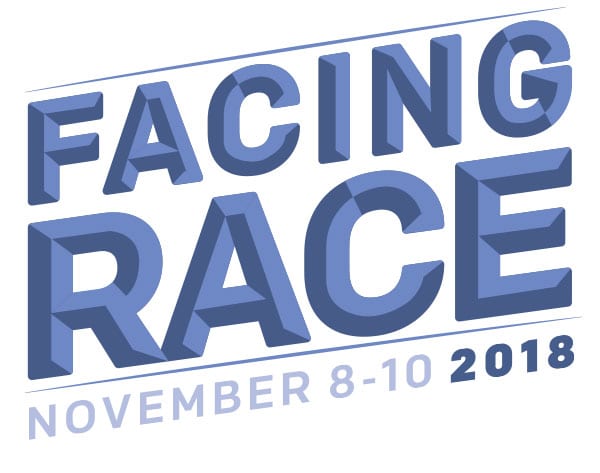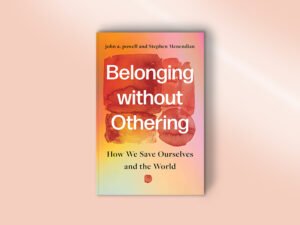
One morning last week, on the last day of the Facing Race conference in Detroit, my colleague and I met a young, Latino conference participant—let’s call him Carlos—as we ate breakfast in the hotel restaurant. His sharing of his experience in the sector to date very quickly turned to the pain of being a person of color in a white-dominant organization. As he shared stories of being one of very few people of color, most in entry- or mid-level positions, trying to manage the often-contradictory goals of engaging communities of color in “collaborative” projects that also justify why the white organization should be the lead, while also having to figure out how to get funding for any racial equity work because the organization would not take any “new” work on without new funding, I felt myself getting upset, because I’ve heard this story so many times over the past two decades. Because I could see that, like many others, Carlos was hugely talented—even overqualified. Because he was actually glad to hear that this was a pattern, as he had felt so alone in all of this up until then. What a waste of talent and passion just when we need it the most!
There are a few patterns that support race-based exclusion in the sector, and NPQ seeks to bring these to light over the coming months. However, an idea that is already emerging and receives enthusiastic support when we ask for feedback about it is the development of a national network for people of color interested in non-dominant innovation in the sector. We are hearing from people of color that when they are brought into organizations, and those organizations are predominantly white, they’re expected to both bring a particular value as a person of color and fit into the dominant culture. This puts the person in what one described as being at odds with “the truth in my heart.” The organizations don’t expect to have to change, and it’s extremely difficult for these people of color to address the challenges from within the organization, in isolation from others like themselves or any other support. Bringing these leaders together outside their organizations quickens the understanding that they are not alone, advances the thinking and practices of race equity from their perspective, and protects them from the predictable backlash of this kind of change.
But really, we need a new funding strategy for racial justice. The current model is that predominantly white organizations that have shown interest in racial equity, usually because they can no longer not do so and by hiring a person of color, receive money to build on that. But, even though that person of color is a symbol of the potential change that often ushers in the money, she usually has no decision-making authority over how that money is used, and it is rarely presented as a budget at her disposal. Or, even worse, as with Carlos, the person is expected to take the lead in identifying the money himself.
People of color are asked to prove themselves, to earn the trust of the leader. The only power available to them is influence. Imagine if white leaders instead had to prove themselves to the people of color. So, if foundations are serious about moving past the stuck place that is racial justice—now called “racial equity”—in the sector, they should seriously consider power-shifting funding. Give the money to the people of color in the organization and support them with the authority and resources to advance racial justice from the vantage point of the people of color. Design the work with equity and justice from the start.
There were probably many others like Carlos at the conference. But there were also many leading thinkers in the field of racial justice. In fact, the breadth and depth of the thinking was so great that many of us talked about the need to recover from the torrent of ideas. There was Rashad Robinson of Color of Change, who spoke in the opening plenary about the role of narrative. Invoking the rescue response in black communities in New Orleans after Hurricane Katrina, he points out that “no one is worried about disappointing black people.” While the story got out, and the country eventually learned about the inequity in the response that left many people of color stranded, many still died. He concluded, “Narrative without power does nothing for anyone.” In fact, “Power is the ability to change the rules.” And that’s exactly what people like Carlos need, what the field of racial justice needs to advance—people of color need to be able to change the rules. Period.
Sign up for our free newsletters
Subscribe to NPQ's newsletters to have our top stories delivered directly to your inbox.
By signing up, you agree to our privacy policy and terms of use, and to receive messages from NPQ and our partners.
Further, many luminaries in social movements spoke, like Tarana Burke, founder of the #MeToo movement, who said, “It’s time to give up the term ‘intersectionality.’ Allyship is beautiful, but we’re talking about black and brown girls. If these people get what they need, white women will get what they need.” One can surmise that intersectionality is being used to re-center white people in some ways. She reminds me of the importance of what Ceasar McDowell calls “designing for the margins.” What works for those at the margins will automatically work for those who are not marginalized.
There were many other gems, like Rinku Sen’s talk on being clear about what your assignment is. She recounts being asked to write a book review in fourth grade but, not knowing what that was at the time, she wrote a five-page, typewritten, detailed summary of the book. Her teacher told her that while it was clear she had put lots of effort into it, she had not done the assignment. Lesson learned: always know what your assignment is. This was a great reminder. It is very easy to get confused about what the assignment is, especially when it comes to shifting power dynamics around race towards equity.
In the final plenary, Political Research Associates’ Tarso Luís Ramos provided historical insight into the rise of the right. Referring to the idea that whites will soon be the minority in the US (check out this NPQ article on the “white as minority” narrative), he said, “When the dominant racial group becomes a minority, democracy is sacrificed.” He suggested three main areas of work for us over the next few years to prevent this: create space for cultural shift work (who’s the we?), block the right from the capture of democratic institutions, and build the practice of multiracial democracy in everything we do.
Ash-Lee Woodard Henderson, a Movement for Black Lives leader and co-executive director of the Highlander Center, closed out the last plenary with powerful words, calling on us to focus on ourselves. If the right wins and we lose democracy, she said, “it’s not about white supremacists, it’s about us.” She reminds us that only time we have democracy is when we do it.
Overall, the conference served as a palpable reminder of the brilliance of those defined as “other,” the overflowing creativity of those at the margins. It left me with a sense of urgency, of what is at stake. I am swearing off predominantly white conferences as irrelevant. What do they have to say about creating a plural democratic future?












